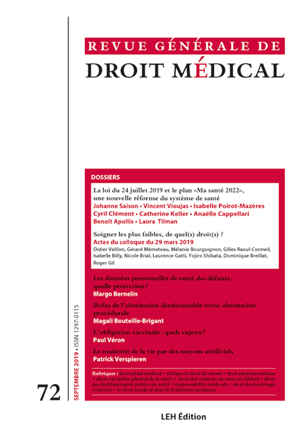Résumé
L’affaire Lambert n’en finit pas. L’ordonnance rendue le 24 avril 2019 par le Conseil d’État contribue, elle aussi, à la maturation du droit de la fin de vie. Elle précise, notamment, le rôle du subrogé tuteur et du juge des tutelles. Elle contribue également à mieux cerner la notion d’obstination déraisonnable en excluant qu’elle soit uniquement caractérisée par une comorbidité. Des imperfections demeurent néanmoins, notamment quant au rôle des proches et à la notion de fin de vie qui peut prêter à confusion. Par ailleurs, on peut légitimement s’inquiéter des conséquences néfastes du déferlement des recours consécutifs à cette ordonnance, caractéristique d’une obstination procédurale, déraisonnable en ce qu’elle porte atteinte non seulement à la clarté du droit de la fin de vie mais plus largement à l’autorité de la justice et du droit lui-même.
Mots-clés
Arrêt des traitements de suppléance vitale – Comorbidité – Fin de vie – Obstination déraisonnable – Subrogé tuteur
Abstract
The Lambert case is a never ending story. The order issued on 24th April 2019 by the French Council of State also contributes to the maturing of the law about the end of life. It specifies, in particular, the role of the substitute guardian and the guardianship judge. It also contributes to a better understanding of the notion of unreasonable obstinacy by excluding only a comorbidity. Imperfections remain, however, particularly as regards the role of family and the concept of end of life that can be confusing. On the other hand, one may legitimately be concerned about the harmful consequences of the flood of recourse following this order, characteristic of procedural obstinacy, unreasonable in that it undermines not only the clarity of the law of the end of life but more largely to the authority of justice and the law itself.
Keywords
Withdrawal of life support – End of life – Unreasonable therapeutic obstinacy – Comorbidity – Supervisory guardian




